As a registered dietitian, I am frequently asked about sugar. Since I get all kinds of questions about sugar at work, I figured you must have them too! Here’s a review of everything you need to know about sugar.

As a registered dietitian, I am frequently asked about sugar. Is brown sugar better than white sugar? I heard that this type of sugar causes cancer. Is honey good for you? Since I get these kinds of questions at work and when out and about, I figured you must have them too!
What is “sugar”?
There are actually several different types of sugar which differ based on their molecular structure. However, we use the word “sugar” as kind of an umbrella term to cover them all. In the simplest terms, sugars are paired into two groups based on whether their individual molecules are paired with a second molecules or not. Those without a partner are monosaccharides and those married to another molecule are disaccharides. For example, the sugar that everyone is most familiar is the white, granulated sugar you use in baking which is made of two smaller sugar molecules bonded together – glucose and fructose.
Monosaccharides:
- Glucose: The most basic molecular building block of sugar. In your body, glucose is important for providing fuel to almost every cell in your body.
- Fructose: Fructose is the form of sugar you find in fruit. You may recognize the word “fructose” from the much debated “high fructose corn syrup” ingredient, but we’ll get to that.
- Galactose: A form of sugar that is only found in milk.
Disaccharides:
- Maltose: Maltose is a combination of 2 glucose molecules. It is created when barley is fermented so you’ll find it in beer, cereals, and pasta.
- Lactose: Lactose is a disaccharide composed of glucose and galactose and is only found in milk or milk products like yogurt and cheese. In those with lactose intolerance, their body doesn’t have enough of the enzyme lactase to properly digest this sugar which leads to unpleasant digestive side effects.
- Sucrose: Sucrose is composed of a fructose and glucose molecule. Also known as table sugar, sucrose comes from sugar cane or sugar beet.
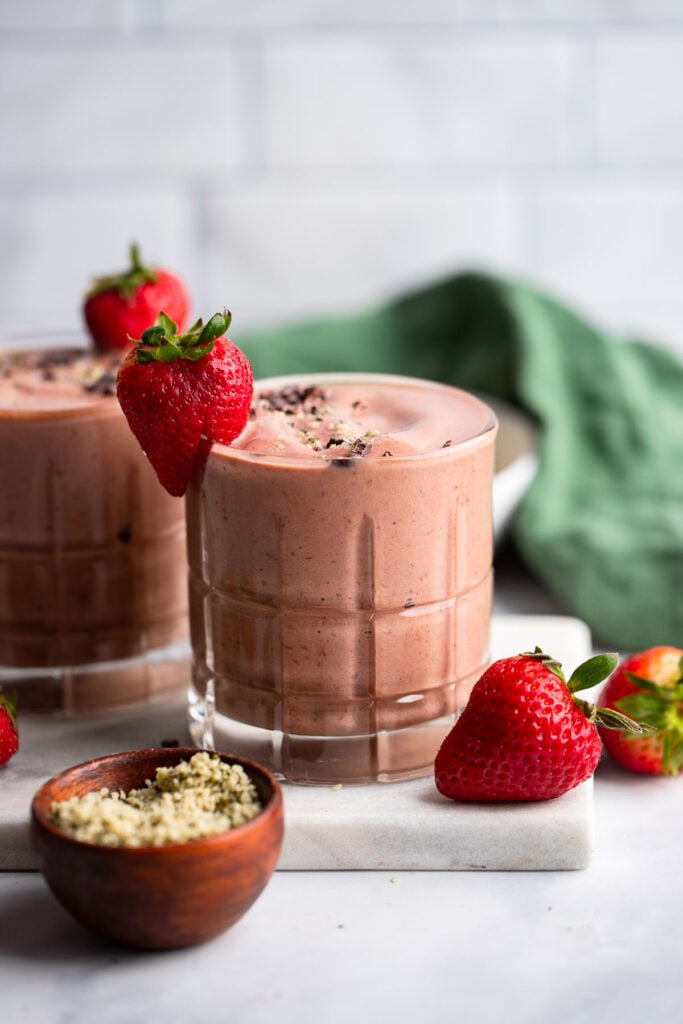
What is high fructose corn syrup and is it bad for you?
High fructose corn syrup (HFCS) is made from corn syrup which has been processed with enzymes to convert some of the glucose to fructose. The intent is to mimic sucrose (table sugar) so the ratio of glucose to fructose is very similar.
It has increased in popularity since the 1980’s because it is much cheaper to produce since it is derived from corn. Currently, high fructose corn syrup is used in the majority of packaged foods sold at the store: bread, cereal, yogurt, beverages, cakes, cookies, etc.
Since high fructose corn syrup is so similar to table sugar (sucrose) it can be hard to pin down a direct association between HFCS and negative health outcomes. Over the last 30-40 years, consumption of sugar in general has increased along with the rate of obesity.
In fact, the USDA reports that from 1970 to 2005, calorie intake from added sugars/sweeteners has increased from 76 kcal/day to 400-476 kcals/day! So yes, high fructose corn syrup has made it easier to consume even more added sugars each day, but at this point can’t be given all the blame.
Rule of thumb, the less fructose you consume in the form of table sugar or high fructose corn syrup… the better!
Are artificial sweeteners ok to eat?
Artificial sweeteners, also known as non-nutritive sweeteners, are manufactured sugars that are exponentially sweeter than natural sugars. You’ll find these sugars used in “sugar free” and “diet” products.
They are typically calorie free so they are toted as a good alternative to actual sugar in foods. However, research has yet to show that those who consume artificially sweetened foods actually consume less calories overall each day. Here are a few of the most common artificial sweeteners you may find in food.
- Aspartame (Nutrasweet and Equal)
- Acesulfame-K (Sweet One)
- Neotame
- Saccharine (Sweet’N’Low)
- Sucralose (Splenda)
- Stevia (Truvia and PureVia)
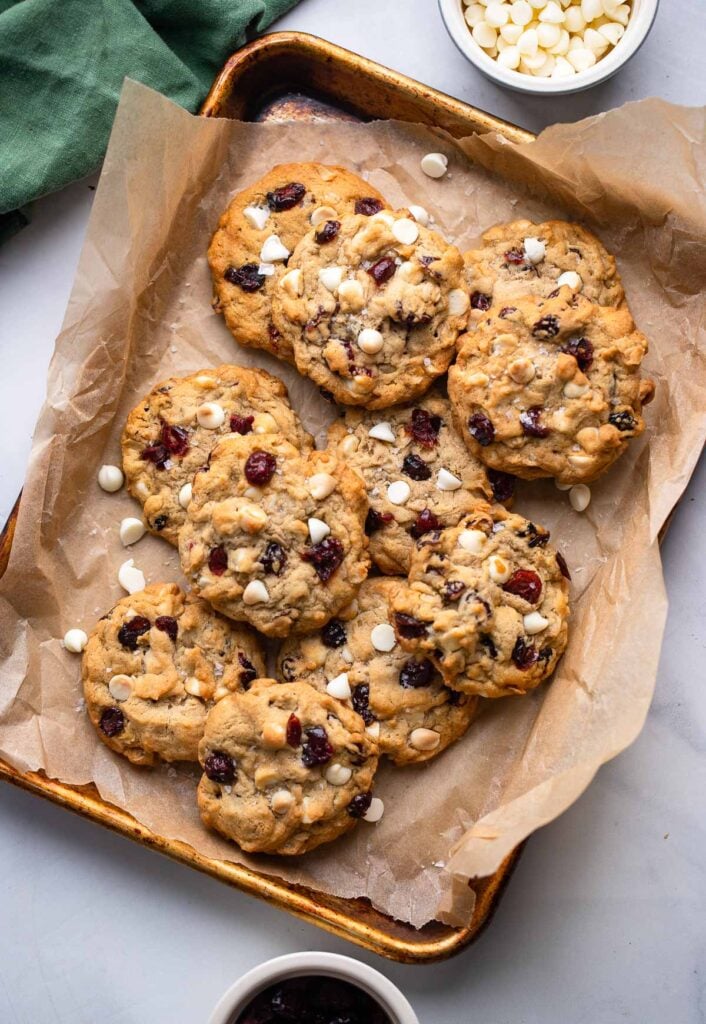
Are maple syrup and honey healthy?
Since maple syrup and honey are more natural, many people encourage the use of these as a replacement for table sugar. However, just like table sugar both maple syrup and honey when used in excess can contribute to weight gain.
Honey is relatively high in fructose. In fact, some honey is illegally “stretched” by adding high fructose corn syrup because of their similarities. Honey does have some redeeming qualities as it contains some B6 and vitamin C.
Maple syrup on the other hand is high in the sugar, sucrose. In addition to sweetness, maple syrup offers some iron, calcium, zinc, and manganese.
Bottom line, although both honey and maple syrup offer a few more nutrients than table sugar for example, they are still added sugars and should be used in moderation.
Is brown sugar better than white sugar?
Raw sugar is light brown because it still contains some molasses. When sugar is bleached to make it white, the molasses is removed. This is sold as table sugar.
To make brown sugar, some molasses is added back into the bleached sugar to add color and some flavor. So is brown sugar better for you than white sugar? Unfortunately, no. They are both almost identical except for the addition of some molasses for color to brown sugar.
What is the Different Between Added Sugar and Natural Sugar?
Natural sugars are those that are found naturally in a food. For example, fruit naturally contains quite a bit of sugar in the form of fructose. On the other hand, added sugar is sugar added to foods when cooking, baking, or processing.
Currently, the American Heart Association has recommendations for the amount of added sugar in your diet, but no one has set any limits on total sugar consumption at this time. However, too much of either sugar can contribute to negative health effects over time.
When you start reading food labels, you may be surprised that there are more added sugars hiding in food than you once thought. It’s almost everywhere – salsas, salad dressings, tomato sauce, etc. This means that if you eat a lot of packaged goods, even if they aren’t desserts, you could be eating more added sugar than you realize.
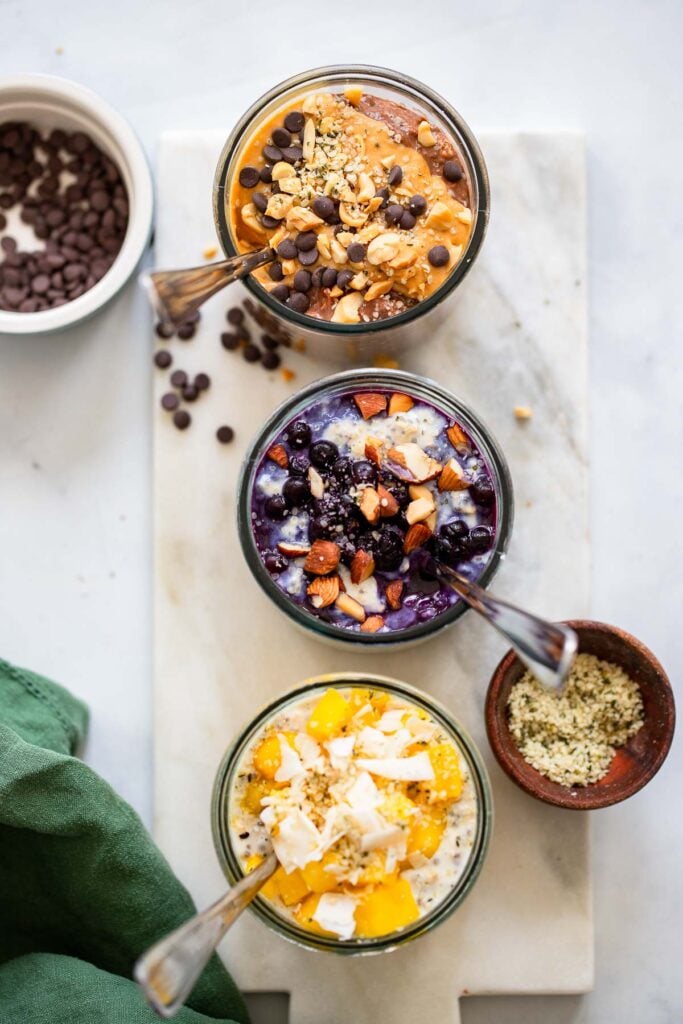
Is sugar bad for you?
The short answer is… yes. Sugar is important as a quick source of fuel for exercise, but as I already mentioned, Americans in general are eating way too much of the sweet stuff. Consistently eating too much sugar (in all its forms) over the course of years can contribute to excess weight gain, elevated triglycerides, increased risk of heart disease, and type 2 diabetes.
The American Heart Association recommends that women limit their consumption of added sugars to no more than 6 teaspoons or 100 calories per day and for men, no more than 9 teaspoons or 150 calories per day. The only problem with this recommendation is that it can be hard to know how much added sugars are in a food since these aren’t yet listed on the nutrition label. If you aren’t sure, you could look for some of the sugar based ingredients listed below.
The food label does list “sugars”, however this includes both added and natural sugars. If you are curious how many calories from sugar the food has, you can simply multiply the grams of sugar in the food by 4. (1 gram of sugar = 4 calories.) Another way to monitor sugar intake is to convert grams of sugar to teaspoons as 4 grams of sugar is one teaspoon.
Added Sugars on Ingredient Lists
As you may have guessed, when you look at ingredients list on a food label it is unlikely that you’ll see the word “sugar” listed. There are so many different forms of sugar! A good rule of thumb is to look for syrups or words ending in -ose. This will give you an idea of whether a food has any added sugars. (You may find it hiding in foods like salsas, pasta sauces, and more!)
Natural and Processed Sugars:
- Agave nectar
- Beet sugar
- Brown rice syrup
- Brown sugar
- Cane sugar
- Corn syrup
- Corn syrup solids
- Dextrin
- Dextrose
- Evaporated cane juice
- Fructose
- Glucose
- High-Fructose corn syrup
- Honey
- Invert sugar
- Lactose
- Maltodextrin
- Malt syrup
- Maltose
- Maple syrup
- Molasses
- Palm sugar
- Rice syrup
- Saccharose
- Sorghum syrup
- Turbinado sugar
Artificial (Non-Nutritive) Sugars:
- Aspartame (Nutrasweet and Equal)
- Acesulfame-K (Sweet One)
- Mannitol
- Neotame
- Saccharine (Sweet’N’Low)
- Sorbitol
- Stevia (Truvia and PureVia)
- Sucralose (Splenda)
- Xylitol
Printable PDF
As a friendly reminder, here is a printable PDF you can take with you to the store or hang on your fridge! –> Guide to Sugar
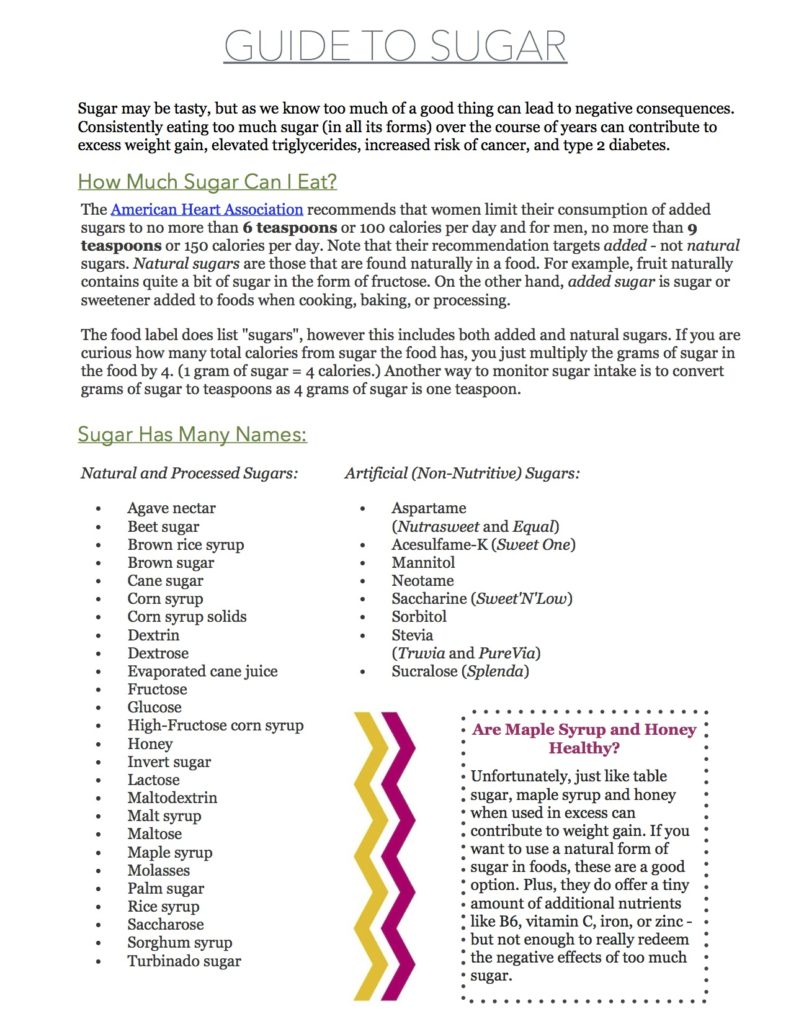
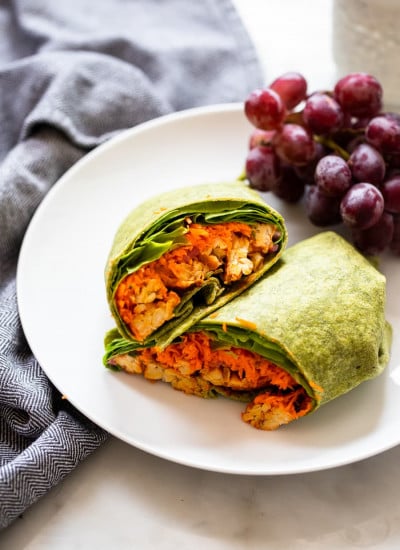

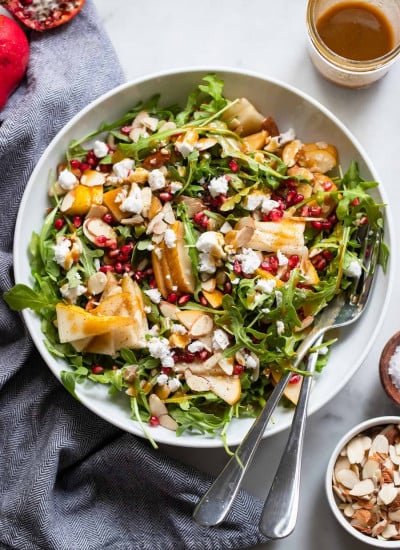
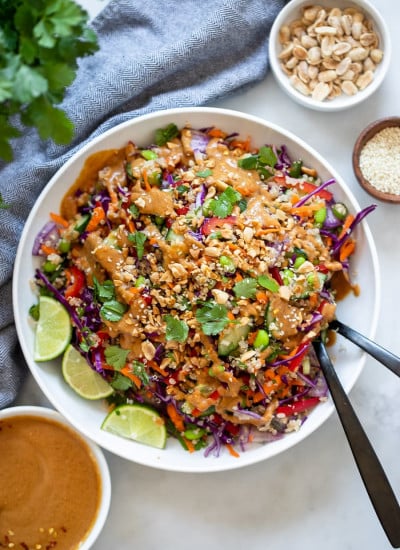

Comments & Reviews
Hi; this is great information. I was at a grocery store today where a booth was set up with samples of an “organic” health bar. The lady promoting the product proudly announced that the bar was healthy because it was made with cane sugar. When I asked her, “isn’t sugar, sugar, regardless of the type of sugar?”, she said there are healthy sugars like cane sugar and brown sugar whereas white sugar is not healthy as it is super processed (according to her). We then discussed whether a person who is diabetic could actually eat what she said is healthy sugar and she did relent and say likely not. I am going to go back to the store with your response as I think she would like to be factual in her promotion of her product. Thanks again for this great information.
What would be a healthy range of total sugar, given the recommendations regarding added sugar as well as fruit and dairy?
Hey Sara,
Good question! I would actually only focus on added sugars rather than natural sugars from fruit and dairy. Research indicates that excess consumption of added sugars is more the problem than fruit and dairy as people who eat more of these foods are usually healthier. (We don’t want to discourage people from eating fresh fruit!) The American Heart Association recommends that you limit added sugar intake to less than 6 teaspoons or 100 calories per day for women and no more than 9 teaspoons or 150 calories per day for men.
Great article! I love how balanced this is unlike so many articles on sugar out there.
Hi Debbie, love this article! It’s so great to read a factual and informative piece on sugar that is also well written and interesting. I will be sharing this around, it gives a great overview that touches on the science, without getting overly complicated. Thanks again! Tori
This is something I wonder about all the time, thank you for writing this post!